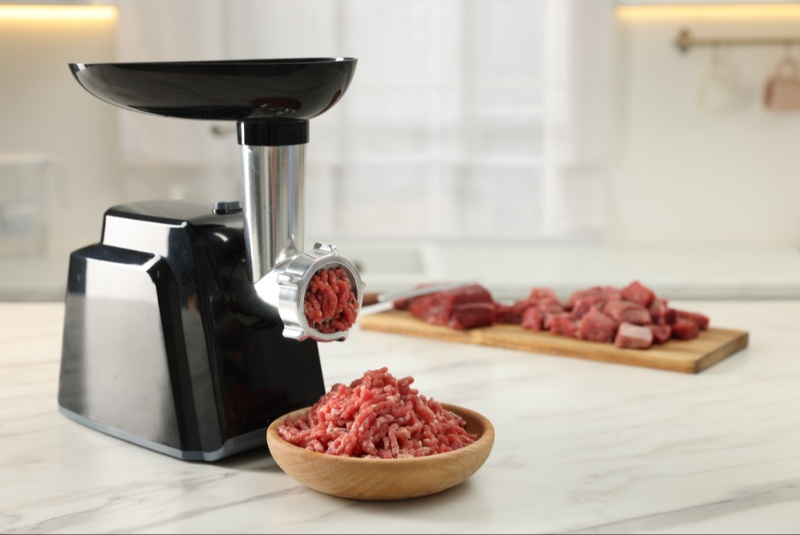A quality meat grinder is a valuable kitchen tool that allows you to control the freshness, quality, and ingredients of the ground meat you use. Whether you're making burgers, sausages, or meatballs, grinding your own meat at home gives you the flexibility to experiment with flavors and cuts. It also eliminates the preservatives and fillers often found in pre-packaged ground meats. Owning a meat grinder ensures that your meals are fresher, healthier, and tastier. This guide will help you understand what to look for in a quality meat grinder so you can make the best choice for your home kitchen.
Consider the Grinder’s Power and Motor Size
When choosing a meat grinder, one of the first factors to consider is the power of its motor. A higher wattage motor allows the grinder to process tougher cuts of meat and larger quantities in less time. For home use, grinders with motors ranging from 300 to 800 watts are usually sufficient, depending on how much meat you plan to grind. If you plan on grinding meat frequently or in large batches, consider a more powerful motor to prevent overheating and wear. A powerful motor ensures efficient grinding and prolongs the life of the machine.
Choose Between Manual and Electric Meat Grinders
There are two main types of meat grinders: manual and electric. Manual grinders are hand-operated, making them ideal for occasional use or small quantities of meat. They are typically more affordable and don’t require electricity, which makes them portable. However, they require more effort and can be slower to use. Electric grinders, on the other hand, are powered by a motor and are better suited for grinding large quantities of meat quickly and efficiently. While electric grinders are more expensive, they are easier to use, especially for regular or bulk grinding tasks.
Look for Stainless Steel or Durable Material Construction
The durability of a meat grinder is heavily influenced by the materials used in its construction. Stainless steel is the preferred material for high-quality grinders due to its strength, corrosion resistance, and ease of cleaning. Grinders made from stainless steel can handle heavy-duty grinding without warping or rusting over time. Some grinders feature aluminum components, which are lighter but may not be as durable as stainless steel. Plastic parts should be avoided in critical areas like the grinding plates, as they can wear down quickly. Opt for a model with durable materials to ensure long-lasting performance.
Evaluate the Grinder’s Grinding Plates and Blades
The quality of the grinding plates and blades is essential for achieving consistent and precise results. Most meat grinders come with multiple grinding plates, allowing you to choose between fine, medium, and coarse grinds. Stainless steel blades are ideal because they are sharp, durable, and resistant to rust. Dull or poorly constructed blades can result in uneven grinding and require more effort. Some grinders offer self-sharpening blades, which can help maintain cutting efficiency over time. When selecting a grinder, look for models with high-quality blades and grinding plates to ensure smooth and consistent performance.

Consider the Grinder’s Capacity and Throughput
The size of the meat grinder’s hopper and its throughput capacity determine how much meat you can process at once. If you’re grinding large quantities of meat for meal prepping or making homemade sausages, choose a grinder with a large-capacity hopper. This will minimize the need to stop and reload the grinder frequently. The throughput of a grinder refers to how much meat it can process per minute, with high-capacity grinders able to handle several pounds in just a few minutes. For occasional home use, a moderate capacity is sufficient, but for regular or large-scale use, opt for a higher capacity grinder.
Think About Versatility and Attachments
Many modern meat grinders come with various attachments that increase their versatility in the kitchen. Common attachments include sausage stuffing tubes, kibbeh makers, and pasta extruders. These accessories allow you to expand the use of your grinder beyond meat grinding, adding value to your purchase. If you enjoy making homemade sausages or experimenting with different culinary creations, look for a grinder that includes or offers additional attachments. This versatility can transform your grinder into a multifunctional kitchen appliance, making it more useful for a variety of tasks beyond just grinding meat.
Ensure Ease of Cleaning and Maintenance
Cleaning and maintaining your meat grinder is essential to its longevity and performance. Look for models with removable parts that are dishwasher-safe or easy to wash by hand. Stainless steel components are generally easier to clean than those made from other materials, as they are less likely to retain food particles or develop stains. Some grinders come with cleaning brushes or tools specifically designed to reach small crevices. Regular maintenance, such as sharpening blades or lubricating gears, may also be necessary. A grinder that is easy to clean and maintain will save you time and keep the appliance functioning efficiently.
Assess Noise Levels During Operation
Noise levels can vary widely between different meat grinder models, especially when comparing manual and electric options. Electric grinders, particularly those with powerful motors, tend to be noisier, which can be an issue if you plan to use the grinder frequently or in a small kitchen. Some models are designed with noise reduction features or operate more quietly than others. If noise is a concern for you, look for a grinder that advertises quieter operation or one that has been reviewed favorably for its low noise levels. A quieter grinder can make the grinding process more pleasant, especially during early morning or late-night use.
Set a Budget Based on Your Needs
The cost of a meat grinder can vary greatly depending on the brand, features, and construction materials. While it may be tempting to purchase a lower-priced model, investing in a higher-quality grinder can save you money in the long run by lasting longer and performing better. If you plan to use your grinder frequently, spending a bit more on a durable and efficient model is a wise investment. On the other hand, if you only grind meat occasionally, a mid-range model may be more than sufficient. Consider your budget and how often you’ll use the grinder to make the best purchasing decision.
Selecting the best meat grinder for home use requires careful consideration of several factors, including power, durability, capacity, and versatility. Whether you choose a manual or electric model, investing in a high-quality grinder will ensure that you can prepare fresh, delicious ground meat at home with ease. By paying attention to the construction materials, ease of cleaning, and additional attachments, you can find a grinder that meets your needs and provides long-lasting value. With the right meat grinder, you’ll enjoy the benefits of homemade, preservative-free ground meats, elevating your cooking and meal preparation.




